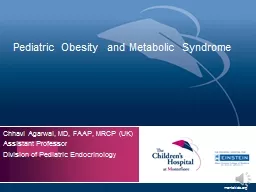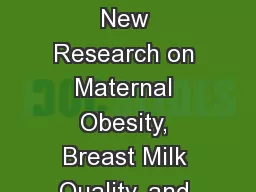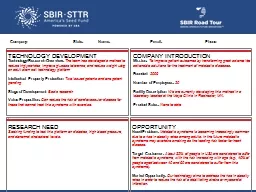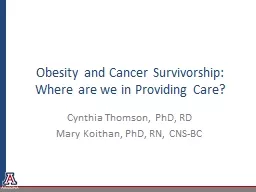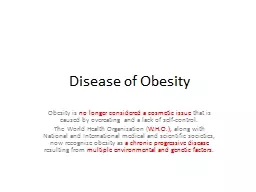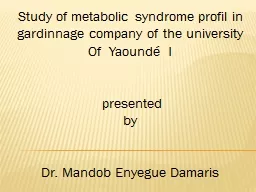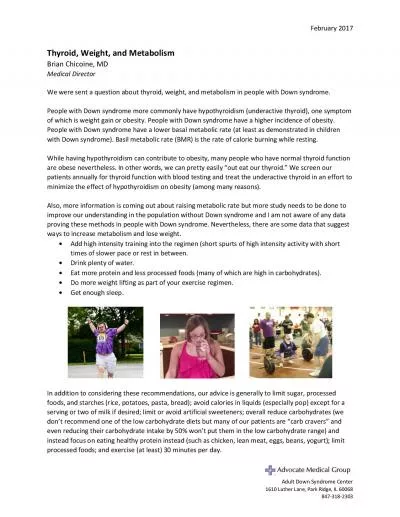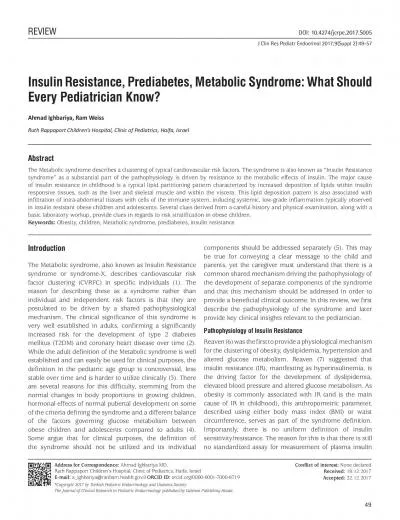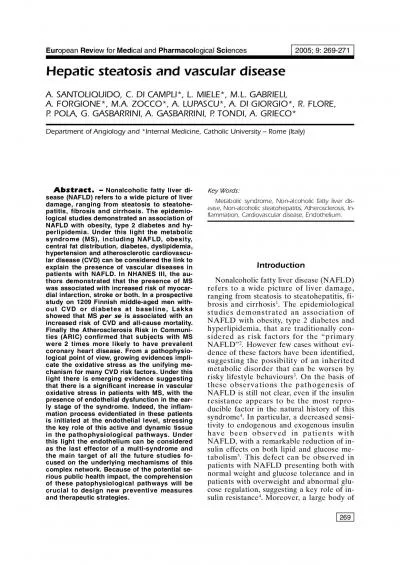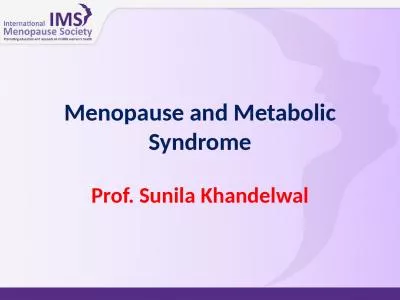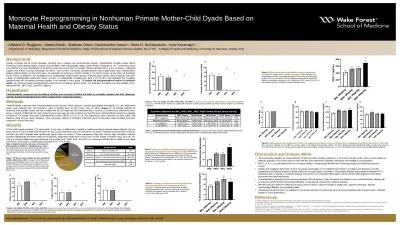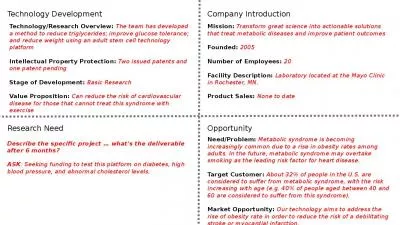PPT-Pediatric Obesity and Metabolic Syndrome
Author : cheryl-pisano | Published Date : 2016-05-30
Chhavi Agarwal MD FAAP MRCP UK Assistant Professor Division of Pediatric Endocrinology Objectives Metabolic Syndrome Etiology Relationship of various components
Presentation Embed Code
Download Presentation
Download Presentation The PPT/PDF document "Pediatric Obesity and Metabolic Syndrom..." is the property of its rightful owner. Permission is granted to download and print the materials on this website for personal, non-commercial use only, and to display it on your personal computer provided you do not modify the materials and that you retain all copyright notices contained in the materials. By downloading content from our website, you accept the terms of this agreement.
Pediatric Obesity and Metabolic Syndrome: Transcript
Download Rules Of Document
"Pediatric Obesity and Metabolic Syndrome"The content belongs to its owner. You may download and print it for personal use, without modification, and keep all copyright notices. By downloading, you agree to these terms.
Related Documents

